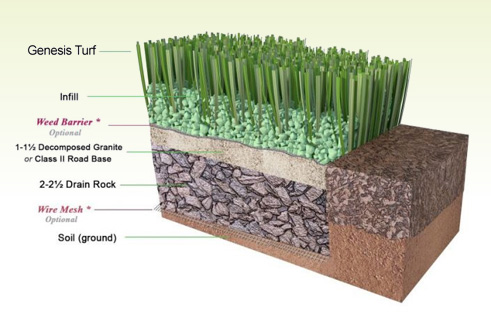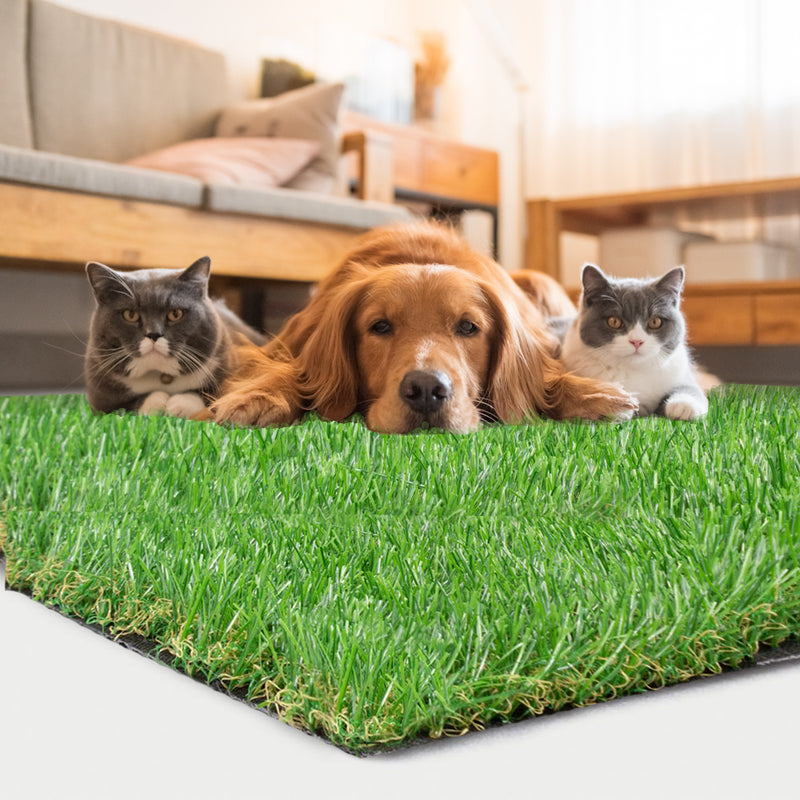Delve Into the Environmental Advantages of Opting for Artificial Grass Solutions
The fostering of man-made grass remedies offers a compelling opportunity to resolve pressing ecological obstacles. By dramatically lowering water usage and lessening the application of harmful chemicals, these options not only advertise sustainable landscape design yet additionally secure local communities.
Water Preservation Perks
One of the most considerable advantages of synthetic grass is its capacity to save water. Typical lawn lawns require considerable irrigation, particularly in areas prone to dry spell or water restrictions. On the other hand, synthetic grass does not require watering, dramatically minimizing the general need for water resources. This function is especially beneficial in deserts where water shortage is a pushing worry.
By getting rid of the requirement for normal watering, synthetic grass adds to lasting landscape methods and helps reduce the ecological impact of extreme water intake. Additionally, the preservation of water encompasses the reduction of drainage, which can lead to soil disintegration and waterway air pollution.
In addition, the installation of synthetic grass enables homeowners and towns to assign water resources more efficiently, concentrating on important usages such as alcohol consumption water and agriculture. The change in the direction of fabricated turf not just advertises liable water usage yet likewise straightens with more comprehensive ecological goals intended at maintaining all-natural resources.
As areas progressively prioritize sustainability, the water conservation benefits of synthetic grass provide an engaging instance for its adoption in commercial and residential landscaping tasks.
Minimized Chemical Use
The transition to synthetic grass significantly lowers the dependence on chemical therapies generally made use of in all-natural grass upkeep. Conventional grass management generally involves the application of herbicides, pesticides, and fertilizers to promote development and control pests. These chemicals can posture risks to human health, neighborhood wildlife, and the setting, adding to soil and water contamination.
On the other hand, synthetic grass removes the demand for these dangerous substances. Once set up, it calls for marginal maintenance, largely containing routine cleansing and infrequent infill replenishment. This decrease in chemical use not just profits the instant atmosphere but likewise adds to broader ecological stability. By lessening the release of artificial compounds into the environment, synthetic grass advertises much healthier dirt and water systems.
Furthermore, the absence of chemical drainage related to fabricated lawn setups helps shield local waterways from pollution, supporting aquatic life and keeping biodiversity. Arizona artificial turf. As communities significantly prioritize sustainable techniques, selecting synthetic turf offers a feasible service that lines up with environmental conservation objectives. Through this change, property owners can enjoy rich eco-friendly rooms without endangering eco-friendly health and wellness, leading the way for a more lasting future
Reduced Carbon Footprint

Furthermore, the setup of synthetic grass can result in significant water preservation. hop over to these guys All-natural yards need substantial amounts of water for irrigation, which not only contributes to the carbon impact connected with water removal and treatment but also strains neighborhood water resources. On the other hand, synthetic grass needs minimal maintenance, requiring no watering, therefore considerably reducing water usage and its connected power costs.
Furthermore, the long life of fabricated grass contributes to its reduced carbon impact. With a life expectancy of approximately 15 years or more, the need for constant replacements is reduced, leading to less waste and lower energy consumption in production and getting rid of standard yard alternatives. Generally, synthetic grass offers a lasting option for eco aware landscaping.
Environment Preservation
Environment preservation is a vital factor to consider in the debate over landscape design choices, specifically when comparing synthetic grass to natural yard. All-natural grass yards often need substantial maintenance, including using herbicides, fertilizers, and pesticides, which can negatively impact regional environments. These chemicals can seep right into the dirt and waterways, hurting indigenous vegetation and animals and interfering with local environments.
Fabricated grass gets rid of the requirement for harmful chemicals, thus safeguarding close-by wildlife and maintaining the integrity of surrounding communities. The installation of synthetic turf can lead to the conversion of former grass locations right into even more biodiverse landscapes, such as pollinator gardens or native plant areas, which can support local wild animals.
Inevitably, the change to man-made grass not only conserves water and reduces upkeep initiatives however likewise fosters a more unified partnership this content between human activities and the native environment, advertising environment conservation in the process.
Long-Term Sustainability
Long-lasting sustainability is a vital consider examining the benefits of man-made grass over typical grass lawns. One of one of the most substantial the original source advantages of synthetic grass is its longevity; it can last up to 15-20 years with minimal maintenance, whereas natural grass needs frequent reseeding and substitute. This durability decreases the need for consistent sources, such as water, fertilizers, and chemicals, which are vital for keeping a healthy and balanced turf lawn.
Furthermore, man-made turf adds to a reduction in carbon discharges connected with grass treatment devices. Traditional yards typically require gas-powered lawn mowers, leaners, and blowers, every one of which add to air pollution. Phoenix turf companies. In comparison, fabricated lawn eliminates the requirement for such equipment, advertising a cleaner environment
Moreover, the production of synthetic lawn increasingly utilizes recycled materials, enhancing its sustainability profile. As manufacturers embrace environment-friendly techniques, the ecological footprint of fabricated grass remains to decrease.

Final Thought
The adoption of synthetic grass options presents significant ecological advantages, including considerable water preservation, minimized dependence on dangerous chemicals, and a reduced carbon footprint. Fabricated grass help in maintaining natural environments by decreasing land disturbance and advertising long-term sustainability with the use of sturdy products. Collectively, these factors underscore the potential of artificial grass to add favorably to environmental wellness and provide a sensible choice to standard landscape design practices in an increasingly resource-conscious globe.
In contrast, artificial lawn does not need watering, significantly lowering the overall need for water resources. By minimizing the launch of synthetic compounds right into the environment, synthetic lawn promotes much healthier soil and water systems.
Moreover, the installation of man-made turf can result in considerable water preservation. In contrast, man-made lawn needs marginal upkeep, needing no watering, therefore considerably lowering water usage and its connected power costs.

Comments on “Reputable Phoenix Turf Companies Providing Best Synthetic Grass Installation”